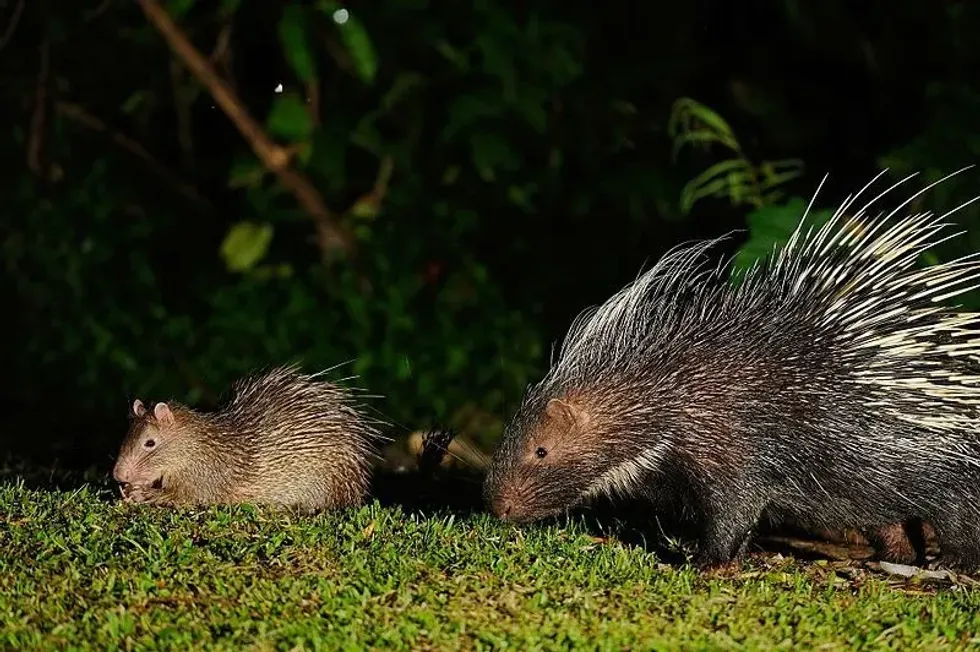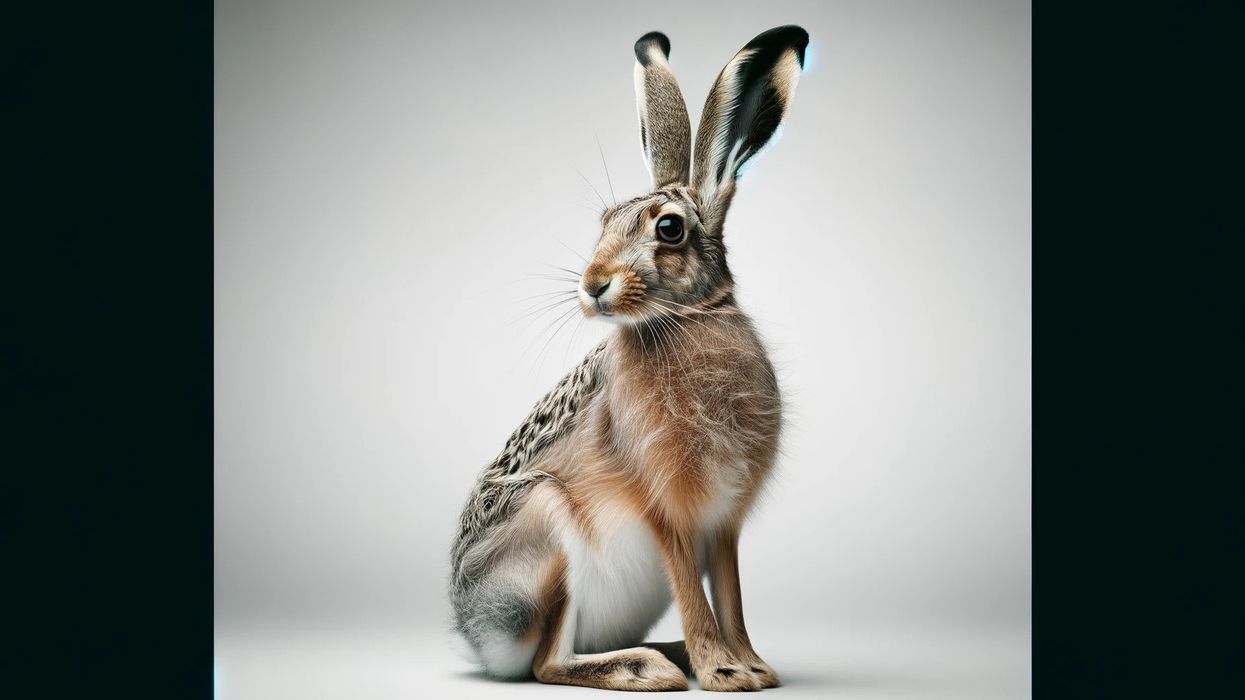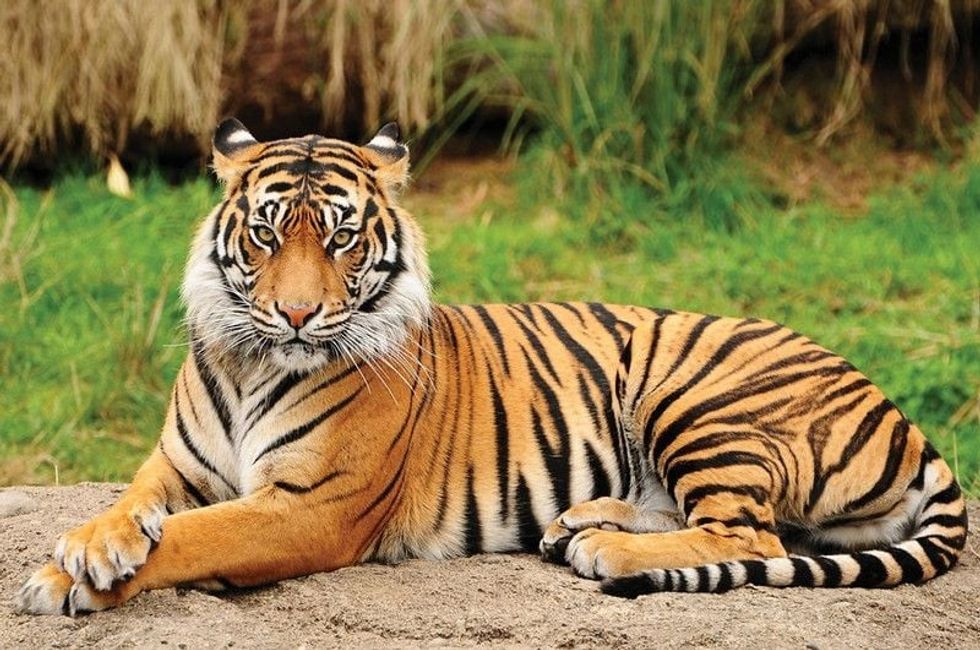The African brush-tailed porcupines (Atherurus africanus) are animals belonging to the rat family of Old World porcupine. They are innate to a broad belt of Africa, ranging from Guinea to Kenya.
These are a common kind with a very wide scope, and despite being used largely for bushmeat. It has been rated Least Concern by The International Union for Conservation of Nature.
In addition to that, their adaptation to the given surrounding is remarkably faster than any other animal, and their babies are known to be well-developed species. They thrive in groups and even congregate to feed and rest.
If you like this article, then also learn more about gerbil facts or beaver facts.
Brush-Tailed Porcupine Interesting Facts
What type of animal is a brush-tailed porcupine?
Atherurus africanus (African brush-tailed porcupine) is known to be the species of rodents in the family of Old World porcupines. They are local to Ethiopia and are nocturnal herbivores.
What class of animal does a brush-tailed porcupine belong to?
They belong to the class of mammals where the female African brush-tailed porcupine delivers the young.
How many brush-tailed porcupines are there in the world?
The exact number of these species (Atherurus africanus) is not yet estimated as their numbers are not decreasing but growing.
Where does a brush-tailed porcupine live?
The African brush-tailed porcupine is one of the three species of porcupine found in Africa. Its brush-like tail quills are used as a rattle when frightened or intimidated.
Their geographic range occurs in Benin, Cameroon, Congo, the Democratic Republic of Congo, Equatorial Guinea, Gabon, Gambia, Ghana, Guinea, Ivory Coast, Kenya, Liberia, Nigeria, Sierra Leone, South Sudan, Togo, and Uganda, in tropical rainforest at altitudes up to 9,800 ft (3,000 m).
What is a brush-tailed porcupine's habitat?
The African brush-tailed porcupine consumes its days hidden in caves, crevices, or fallen trees. They favor naturally occurring caves and do not usually burrow on their own. These rodents (Atherurus africanus) are located in forests, river forests, and island forests, at elevations of up to 7400 ft (2255 m).
Who do brush-tailed porcupines live with?
African brush-tail porcupines live in groups usually consisting of eight members, so the young typically remain with their parents at the beginning of their lives. Also, different family groups are allowed to share resources.
How long does a brush-tail porcupine live?
The African brush-tailed porcupine species can live up to 15 years if kept in human care, and they can live longer than that as well because of their strong accommodating environmental skills.
How do they reproduce?
Brush-tailed porcupines construct burrows, which occupy up to three animals. Females produce one or two litters a year, of a single young, after a gestation period of 100 - 110 days.
They form pair bonds before mating. This is required because the female acts aggressively against a male with whom she is not familiar, raising her spikes and thus obstructing the mating process. There is no clearly defined breeding period of this species but females deliver well-developed newborns.
African brush-tailed porcupines young are born with open eyes at birth, the teeth already exist, and the body mostly comprises hair and no spines. Due to the long gestation period, the young are born small, weigh significantly less.
Because of their small size, the parents spend a lot of energy raising the young. Mothers take care for the first two months after birth. These animal species reach sexual maturity after completing two years.
What is their conservation status?
The African brush-tailed porcupine comes under the Least Concern category as their numbers are increasing, but they are still hunted for their meat. This is because the species possess better adaptability nature.
Brush-Tailed Porcupine Fun Facts
What does a brush-tail porcupine look like?
African brush-tailed porcupines are some of the biggest rodents in Africa, having a body length of 14-23 in(36.5 -60 cm) and a tail length of 3-10 in (10-26 cm). The body shape is long, but the legs are very short and broad.
The feet are webbed and contain five fingers with nails.
They vary in color from black to dark brown on the upper and back sides and white to light brown on the abdomen. You can see five teeth on each side of the jaw: one incisor, one premolar, and three molars.
The body of the African brush-tailed porcupine is covered with many types of protective spine. The most delicate ones appear on the head, neck, and stomach. Flattened blade types of spines are found on the sides of the back with more flexible bristle-type spines in the mid-region.
Brush-tailed porcupine (Atherurus africanus) species also has a yellowish brushtail with platelet-type bristles and a few thick, long spines on the hind back. Hence, the name brush-tail. These bristles, however, cannot be brushed.

How cute are they?
They look cute yet creepy because of the spines they carry on their back.
How do they communicate?
Before breeding, the female African brush-tailed porcupine raises her tail, and the male stands on his hind legs. Apart from that, they are mainly terrestrial but are also good at climbing and swimming.
Most of their known predators, such as owls, snakes, and humans, tend to be scared away by the presence of their spikes.
When disturbed, these old-world porcupines can raise their spines, displaying the impression of a body twice its actual size. They are also seen rattling their tails while making loud sounds and stomping their feet in order to further threaten their enemies if the predator comes close enough.
How big is a brush-tail porcupine?
They can grow up to 15-19 in (40-50 cm). This is a couple of inches larger than the average beagle or cesky terrier.
How fast can a brush-tail porcupine move?
They (Atherurus africanus) are very quick in movement, especially during hunting.
How much does a brush-tail porcupine weigh?
The species can grow up to 6.61 lb (3 kg).
What are the male and female names of the species?
The male and female live in groups of eight and they are not referred by a specific name.
What would you call a baby brush-tail porcupine?
There is not a particular name given to the well-developed babies of the brush-tail porcupine.
What do they eat?
The African brush-tailed porcupine is a herbivorous animal that feeds on leaves, flowers, fruits which have fallen down on the forest ground. They also prefer roots and palm nuts, nodules as their food, and sometimes invade crops like maize and bananas that grow close to the forests.
These porcupines (brush-tailed porcupines) tend to be quick on their feet and move quickly while hunting on the ground. Recently they have also been found feeding on carcasses of animals.
Are they poisonous?
No, they are not poisonous but can be dangerous as they raise their tail quills and appear larger to threaten the danger they feel. They can even release the spines towards their threat which get stuck in the enemy's body.
Would they make a good pet?
Yes, they can be kept as a pet depending upon the location, provided they receive the necessary nutrition, space, and protection from their predator to grow. According to research, they can live up to 25 years in human captivity.
Did you know...
The meat of the brush-tail porcupine is famous and is consumed in large quantities.
The African brush-tailed porcupine is notorious as an agricultural pest as they destroy the bark of rubber trees, eat corn, pumpkins, and sweet potatoes.
What adaptations do brush-tail porcupines have?
The family shares runs, territories, feeding, and latrine areas. Groups of families consist of up to 20 individuals and always live in close proximity to each other. Since they are known to thrive in river forests, they have adapted themselves as excellent swimmers and mostly live in crevices and hidden rocks.
What is the difference between a brush-tail porcupine and a regular porcupine?
Old World porcupines (brush-tailed) bear a litter of one to four after a gestation of approximately 100 days. Brush-tailed porcupines (genus Atherurus) move swiftly over the ground and can climb, jump, and swim. Their spines are flattened, grooved, and flexible or long, hollow, and sharp.
Well, the other porcupinesusually bear one young, sometimes two, after about 200 days of gestation period. Their quills are sharp, stiff, and circular in cross-section, and have pointed tips. They move gradually and are unable to jump, so they stick to the ground to cross passages between trees.
Here at Kidadl, we have carefully created lots of interesting family-friendly animal facts for everyone to discover! For more relatable content, check out these Nutria facts and Gopher facts pages.
You can even occupy yourself at home by coloring in one of our free printable porcupine coloring pages.









